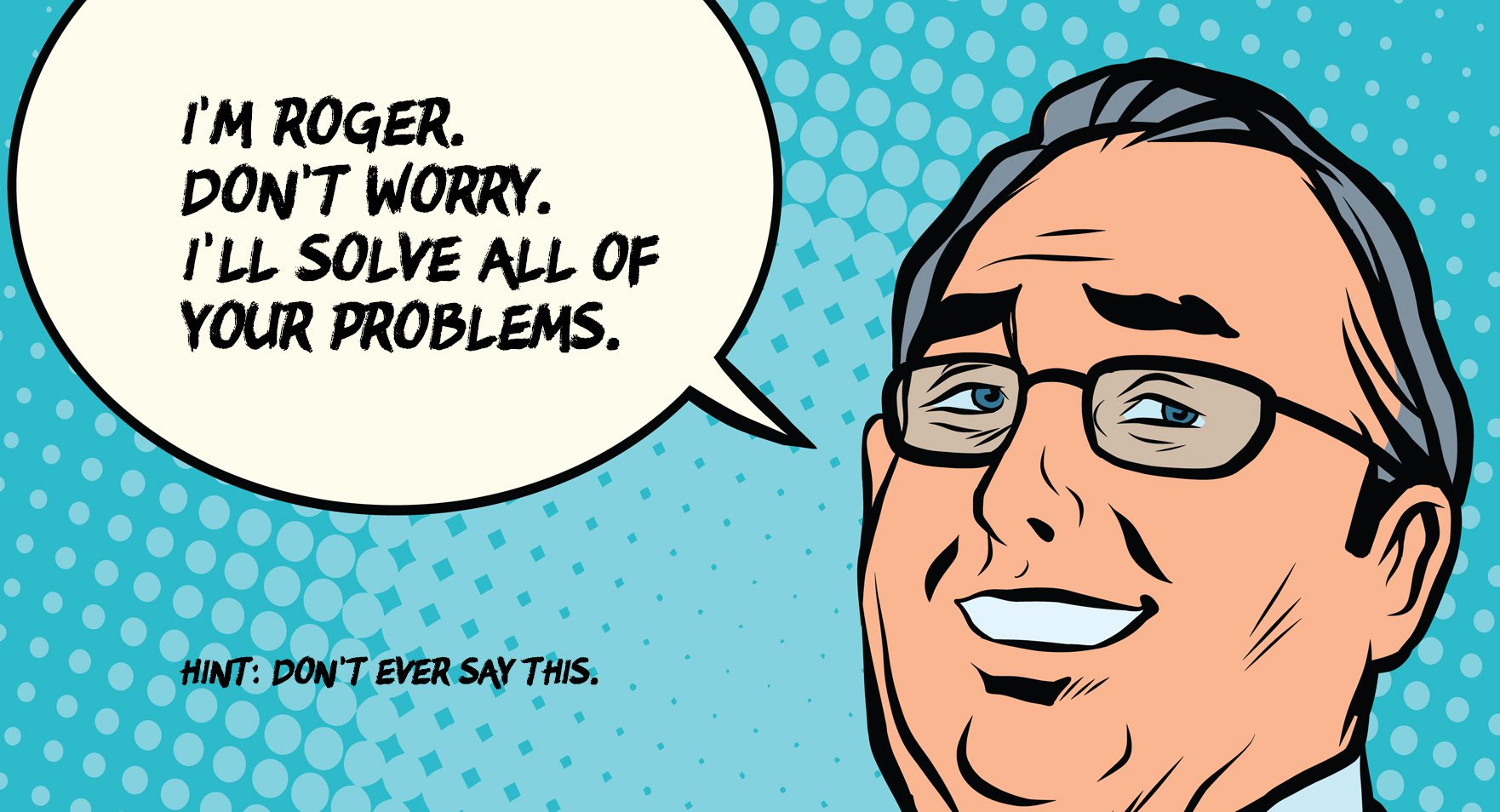How many of us not only begin the first sentence of our marketing pitch with “we,” but then continue to use “we” throughout the entire conversation? Our marketing materials are filled with “We have a new…” and “We have been around for…” when at the beginning of our customer’s buying journey, few of them care about who we are or how long we’ve been around.
There is a time and place for that conversation, and it helps qualify your company, but it’s not the first thing your customers are looking for. What do people care about? Themselves, and the problems they are trying to fix to make them more successful in business and in life. It’s all about positioning.
1 // The Hero
One of the most important things to consider is the narrative your customer is forming around themselves and your product/service. Ideally, you are marketing your product/service because you believe your target customer has a problem you can solve. The challenge lies in conveying this to your customer in a way that makes them feel like they are the hero, and you are the guide. For them to become a real customer, they need to a) recognize that they have a pain point in the first place and b) believe your product/service will help them solve it.
2 // The Problem
Like any good story, you need to start by situating the reader (your customer) in the context of a hero with a problem. Depending on your product/service, this problem is the biggest pain point you believe your customer is facing.
You should ask:
- What is the job or task they are trying to complete?
- What is the main problem your customer faces that you can solve?
- How is this problem making them feel?
3 // The Attempt
Your customer has inevitably tried to solve the problem themselves at some point during their journey. They may have spent hours searching online and reading articles about their specific problem and what solutions exist. They may have even gone so far as to make a purchase or make changes in their organization that would solve the problem.
You should ask:
- What are they currently doing to solve the problem?
- What is the problem with the current solutions out there?
Your marketing materials should address this problem and flesh it out, setting the scene and describing the situation in a way that will make them say, “Yes, that’s me!”
4 // The Guide
You need to be the guide. A lot of marketing materials offer an overview of their product/service including a bunch of “features” thinking that is how they will “save” the customer. People don’t buy a car just because it has navigation, or bluetooth. At the end of the day, it’s emotion that helps them make that final decision. That emotion is driven by the benefits of the car purchase, not just the features. As the guide, you are coming to inform, equip, empower, and ultimately build trust so that your potential customer can tackle the issue themselves. You want to play the role of the wise, calm, optimistic guide who believes in your customer and enables them to succeed, while always keeping them firmly in the role of the hero who will ultimately have to conquer their problem.
You should ask:
- What makes us different from the competition?
- Why would they choose to purchase from us?
- What are the consequences of them not purchasing right now and remaining in their current situation?
5 // The Plan
Enabling the customer to succeed means giving them a plan with a call to action. The CTA could be to buy your product, to enroll in your service, or to meet with one of your representatives. Either way, it needs to be clear. Your customer should have no questions about what the plan is and how to perform the call to action successfully. Lack of clarity or overloading them with too many options in this step of their journey could cause confusion and result in them simply walking away.
6 // The End
Finally, it’s time to write the ending to your THEIR marketing story. The hero’s journey will have either a positive or negative outcome. Your marketing materials should include a results section that includes case studies from previous companies that have arrived at the happy ending stage of the story in order to build trust with your customer. And of course, for the hero to live happily ever after, you need to do your job as a company and make sure your product/service delivers every time you work with a customer.
You should ask:
- What does success look like for the customer?
- What do you want the customer to say about you when they talk to friends or colleagues?
Positioning is key. You must position yourself as the guide. Guiding your hero to the ending of their story, helping them avoid tragedy, and conquer their insurmountable pain points is an extremely effective way to provide value and build trust. Keep the structure of the marketing story in your mind with every piece of content you push out, and make sure you are building a narrative that enables your customer to feel empowered.
–––––
How healthy is your brand? Take this free 20-question survey to find out.

